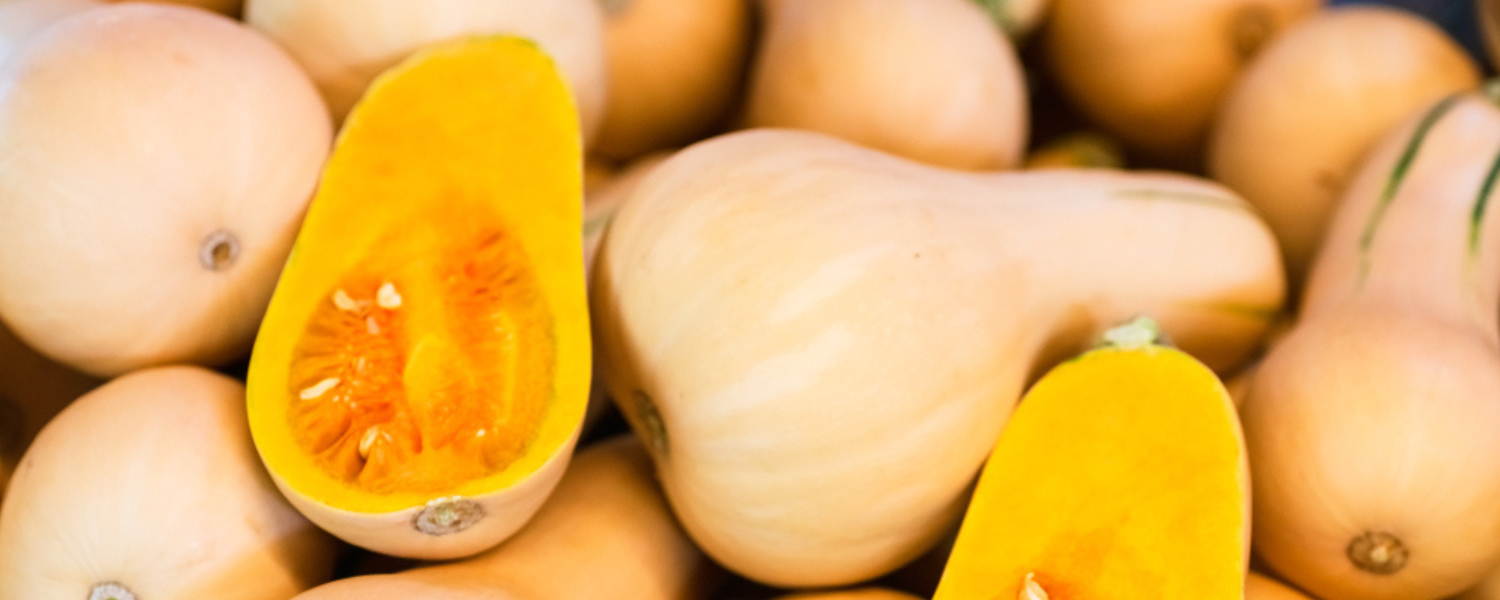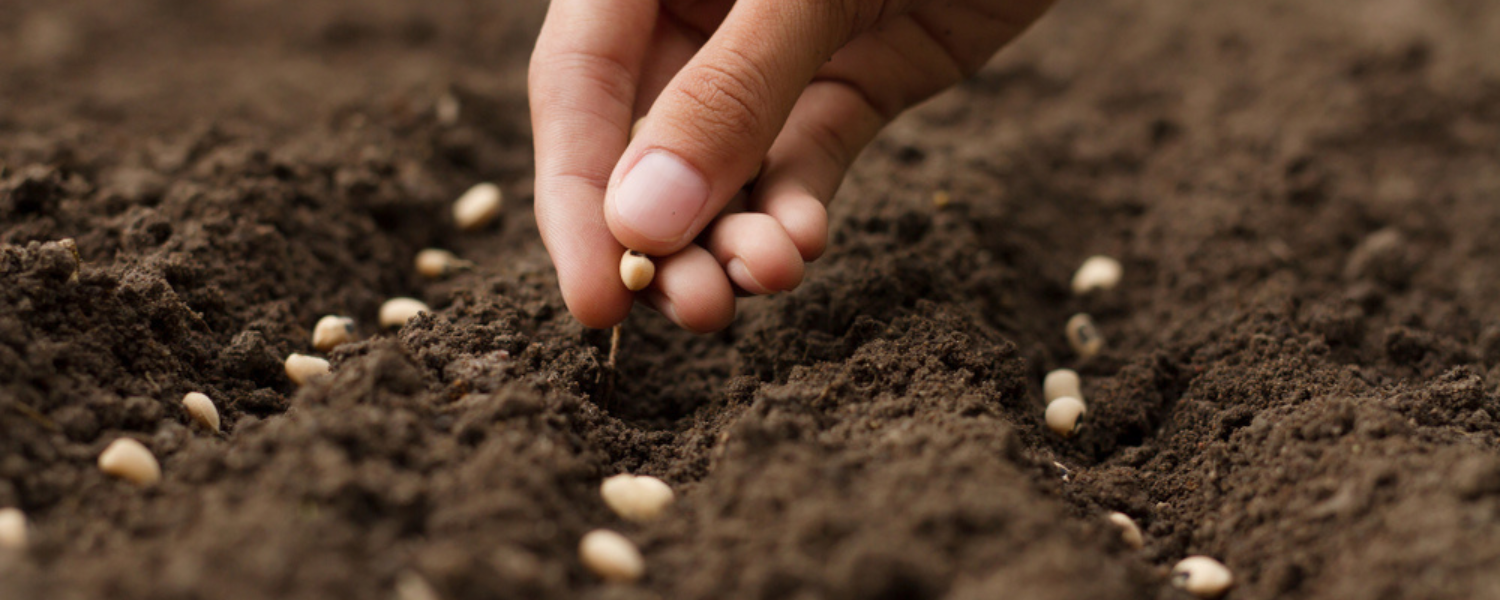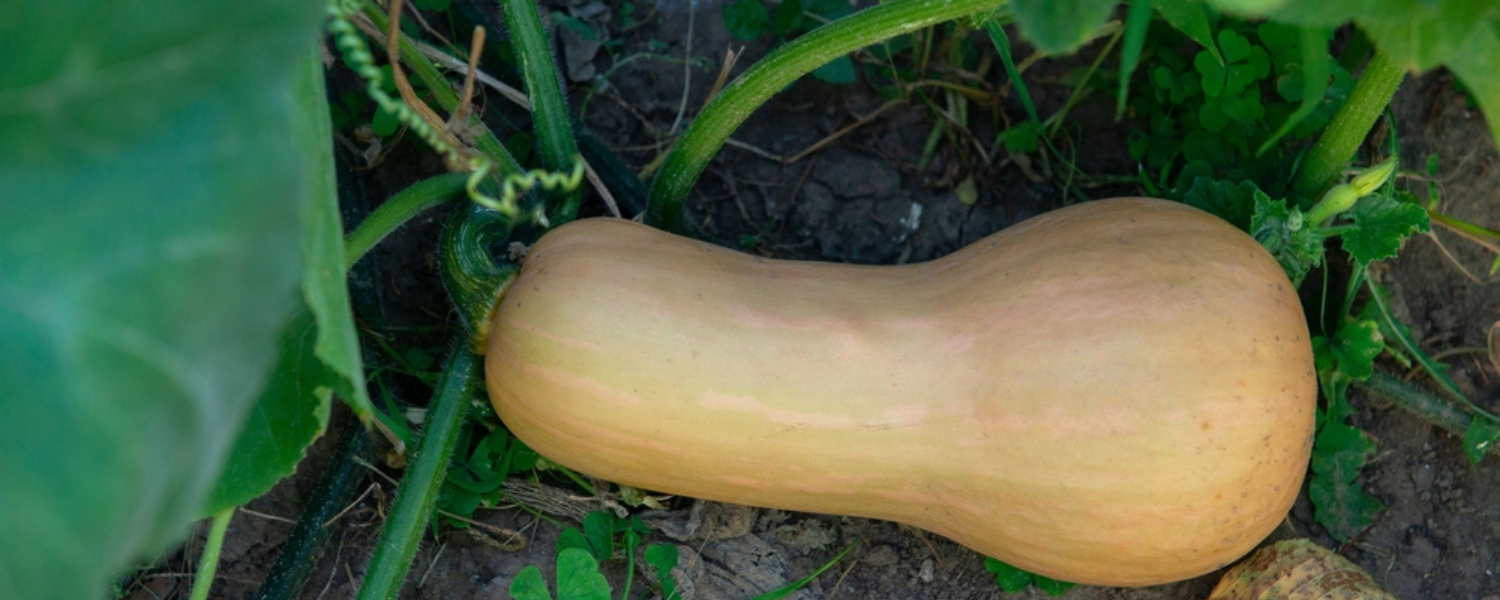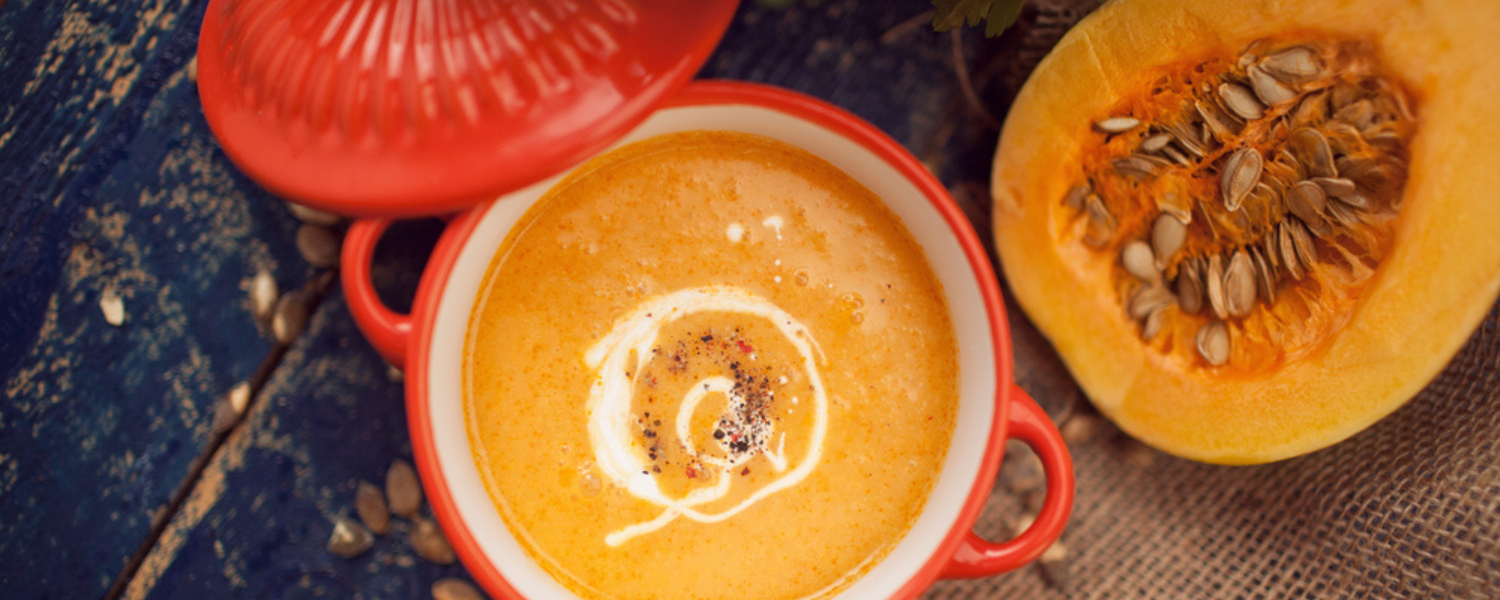One of the most widely grown squashes is butternut squash. Harvestable in the fall, the bulbous pears feature thin skin and a sweet, thick orange flesh. As a result, they are simple to cook and a fantastic option for roasting and adding to soups. Being low in carbs and a high source of vitamins, butternut squash is a fantastic vegetable for your health.
When growing butternut squash, it is important to choose a sunny location with well-drained soil. The plants should be spaced about two feet apart, and they should be given plenty of room to spread out. Water the plants regularly, especially during dry spells.
Harvest the squash when the skins are hard and the fruits are mature. This typically occurs in late autumn or early winter. With a little care, you can enjoy a bumper crop of delicious butternut squash. Read on to learn all about how to grow butternut squash!

Growing Conditions For Butternut Squash
Light & Temperature
Full sun is required for butternut squash, ideally 6 hours per day. It's okay for plants to spend more time in the sun as long as they don't get too hot. A soil temperature of at least 70 degrees Fahrenheit is required for squash to germinate because they are cold-sensitive.
Although they enjoy the sun, these plants can get too hot. It's typical for the leaves to wilt in the afternoon on hot summer days before coming back to life at dusk. Give your plants some afternoon shade if they aren't recovering.
Soil
Butternut squash grows best in rich, loamy soil that is well-drained. The soil should also be slightly acidic, with a pH level between 6.0 and 6.8. If your soil is too alkaline, you can add compost or peat moss to help lower the pH level. It's also important to make sure that the soil is kept moist throughout the growing season.
Water
You must prevent seedlings from drying out. Your plants will require more water as the summer goes on and the vines grow larger. Leaves may wilt daily in hot, dry weather but will recover as the day cools. Water the plants immediately if they have wilted leaves in the morning. At least an inch of water per week is required by the plants.
Nutrients & Fertilizer
Butternut squash require a lot of nutrients. Start with rich soil, then in the midst of the growth season, side dress with organic compost or aged manure. Apply a liquid fertilizer or compost tea further every two to three weeks.

How To Plant Butternut Squash
It's time to plant after the soil reaches 60 degrees Fahrenheit and there is no longer a chance of frost. To plant butternut squash seeds, follow these steps:
Start Seeds Indoors
Six weeks before the anticipated final frost, you can start your seeds indoors. Plant seeds in a sunny window or greenhouse using a soil that drains well. After the last frost, harden off the seedlings before moving them to an outside site.
Choose A Sunny Location
Butternut squash grows best in areas that receive full sun, whether you're sowing your seeds in the ground or in a raised bed. Butternut squash prefers organically rich, well-draining soil.
Build A Hill
Butternut squash plants require you to mound the soil before planting, just like the majority of vining crops. Before planting your seeds, compile earth into a mound or small hill that is about 18 inches tall.
Plant The Seeds
Just below the soil's surface, plant seeds. At a depth of half an inch to an inch, scatter seeds in clusters of four to five. When planting, keep the seeds about four inches apart to avoid crowding as the plants develop.
Water Regularly
Until they take root, butternut squash seeds need continually moist soil. The seeds should sprout in approximately 10 days if the soil is kept moist but not drenched.
Thin Your Seedlings
When your seedlings emerge, thin them out to the suggested spacing specified on the seed packet. Thinning them will help mitigate any plant disease or pests issues while at the same time allowing for optimal growth.

Harvesting & Storing Butternut Squash
To decide when to pick the fruits, look at their color. Their skin will start to turn light beige as the summer draws to a close. When that beige hue deepens, they are ready to be harvested; ripe fruit will frequently have bronze highlights (and no green streaks) on its skin.
Fruit should be picked before the first frost, but it should also be fully ripe to ensure storage longevity. You can determine maturity using these tips. At maturity, the stem's junction with the fruit has a brownish hue.
There should be no color to the skin. Make a nail-like puncture in the skin. It is immature if it leaves a mark. Let it develop further. The skin of a fully developed fruit will be impossible to pierce.
Cure the squash for 1–2 weeks after harvesting it before storing. Keep it in a warm, sunny area outside. Move it inside to a dry, cool area with a temperature of about 55 degrees once it has cured.
Common Butternut Squash Pests & Disease
Pests
The most common pests that attack butternut squash plants include aphids, cucumber beetles, and squash bugs. Aphids are small, soft-bodied insects that feed on the sap of plants. They can cause stunted plant growth and reduced yields. Cucumber beetles are small, striped beetles that are attracted to the flowers and leaves of squash plants.
They can transmit diseases and damage the plant's fruit. Squash bugs are large, dark-colored bugs that suck the juices out of squash leaves. They can cause yellowing and wilting of the leaves, as well as reduced yields. To prevent these pests from damaging your butternut squash plants, be sure to inspect your plants regularly and take action immediately if you see any signs of infestation.
Plant Disease
Butternut squash can be affected by a number of diseases, which can cause the fruit to rot or the leaves to wilt. One of the most common problems is powdery mildew, a fungal disease that affects the leaves and stems of the plant.
Powdery mildew can be controlled with fungicides, but it is important to catch it early because it can spread quickly. Other diseases that can affect butternut squash plants include bacterial wilt and downy mildew. These diseases are less common than powdery mildew, but they can still cause problems for growers.

Winter Squash VS Summer Squash
Squash is a vegetable that belongs to the gourd family. There are two main types of squash: winter squash and summer squash. Winter squash is harvested in the autumn or early winter, while summer squash is harvested in the summer. Each type of squash has its own unique flavor and texture.
Winter squash is typically larger and tougher than summer squash. It has a thick skin that can vary in color from orange to green to brown. The flesh of winter squash is also usually darker than summer squash, and it has a rich, sweet flavor. Some common varieties of winter squash include acorn squash, butternut squash, and pumpkin.
Summer squash, on the other hand, is smaller and more delicate than winter squash. It has a thin skin that is typically green or yellow in color. The flesh of summer squash is usually lighter than winter squash, and it has a mild, slightly sweet flavor. Some common varieties of summer squash include zucchini, crookneck squash, and pattypan squash.
Review: How To Grow Butternut Squash
Though often thought of as a winter squash, butternut squash is actually a member of the summer squash family. A close relative of cucumbers and melons, this unusual fruit is easy to grow in most home gardens. Butternut squash requires full sun and well-drained soil.
Plants should be spaced about two feet apart, and rows should be spaced four to six feet apart. To prevent disease, it is important to avoid getting water on the leaves of the plant. Instead, water at the base of the plant, taking care not to damage the roots. When fruit begins to form, vines may need to be supported with stakes or cages.
Butternut squash is ready to harvest when the skin of the fruit is hard and has turned a deep brown color. Fruits can be stored in a cool, dry place for several months. Thanks to its versatility and long shelf life, butternut squash is a popular choice for both home gardeners and commercial growers alike.

